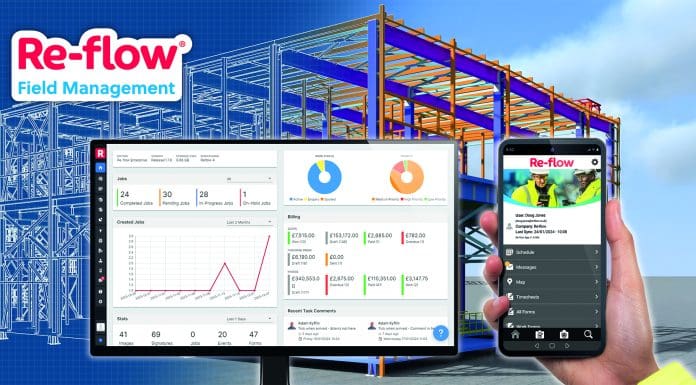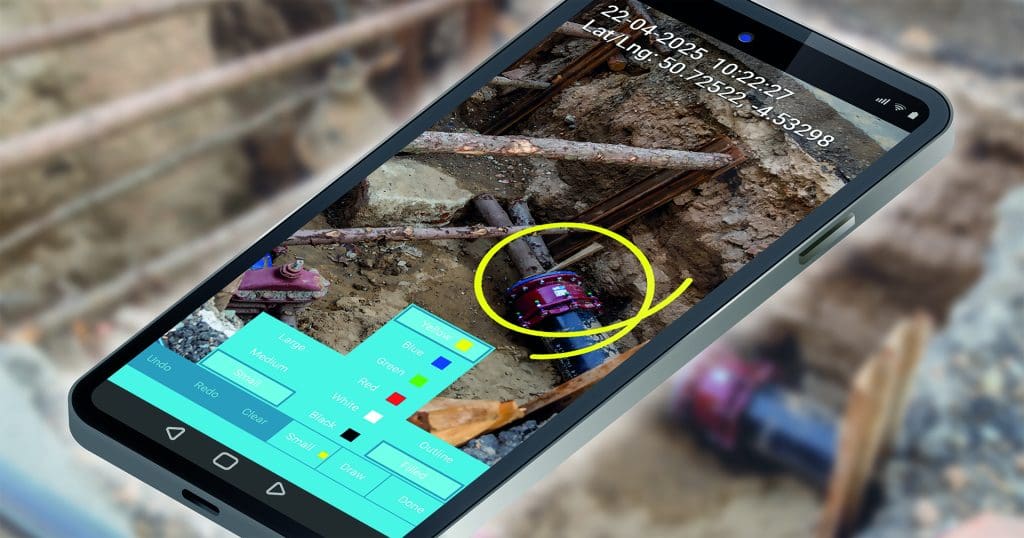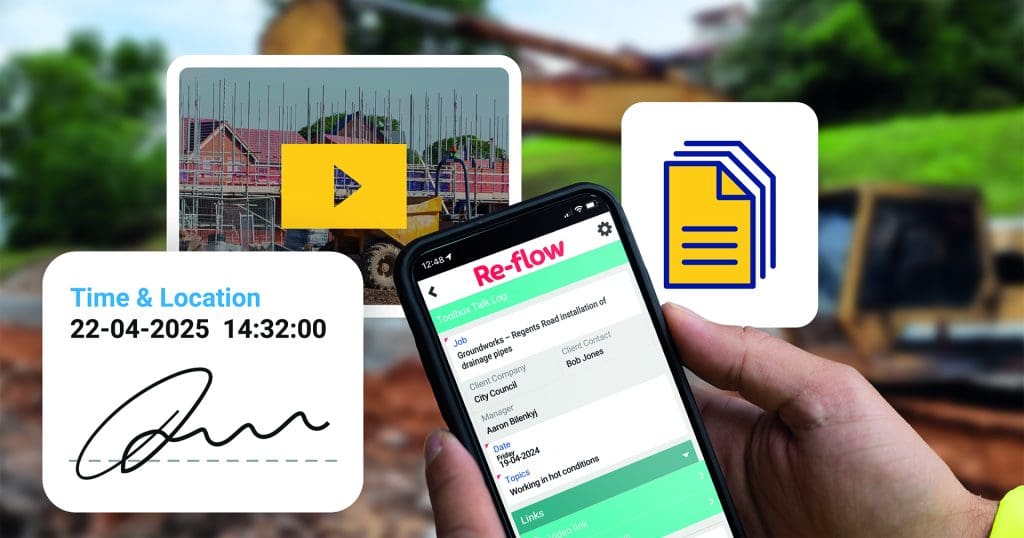
Field management software like Re-flow links BIM and on-site teams, providing a single, efficient solution for real-time updates
At its best, Building Information Modelling (BIM) appears to have revolutionised construction – it’s been described as a “superstar” tool for the industry.
However, its application often falls short in the field, when it can be perceived more as a design tool and not as an innovation relevant to the day-to-day running of sites. Statistics indicate that only 41% of construction companies using BIM connect their office and site teams.
This disconnect and siloed data leads to BIM models becoming quickly outdated as work progresses.
On site, manual processes can hinder data capture and real-time data sharing, negating BIM’s potential for more informed decision-making and reactive insights.
The impact of disconnected field operations
A study by Autodesk and FMI revealed that poor project data and miscommunication are responsible for 52% of all rework in construction.
Rework leads to significant financial losses. Navigant Construction’s report, The Impact of Rework on Construction & Some Practical Remedies concluded that “average rework on projects can cost between 7.25% and 10.89% of total construction cost (…) and can cause a project delay of approximately 9.8% of the planned project time”.
Field management software can help unify operations
Field management software like Re-flow bridges the gap between BIM and on-site teams by providing comprehensive data capture and a single, efficient solution for real-time updates to the field. This transforms sites into live, interconnected networks of information and a central hub for all communication.

Here’s how:
1. Live, version-controlled documents
- Management software offers real-time access to the latest project documents, including drawings, specifications and health and safety information. Updates can be instantly sent to sites, sent through the cloud to the software’s phone app.
- Field teams can access up-to-date information directly on their mobile devices, ensuring that all team members are working from the same information, minimising errors and rework caused by outdated or incorrect data.
- Notifications can also alert teams about any changes.
2. Geotagged photos and site forms
- The platform allows for the capture of geotagged photos and completion of site forms directly from the field.
- This real-time data collection provides accurate and immediate feedback on site conditions and progress. The data can be integrated back into the BIM model, ensuring that the digital representation reflects the actual state of the project, facilitating better decision-making and planning.
3. Audit trails and digital sign-offs
- Software like Re-flow maintains comprehensive audit trails and supports digital sign-offs for tasks and inspections.
- This enhances accountability and traceability of actions taken on-site and allows for more robust management.
4. Customisable workflows
- The platform offers customisable workflows tailored to specific project requirements and BIM maturity levels. Forms can be built to capture the specific data points a project might need that directly correspond to BIM model attributes, like installation status, material properties and inspection outcomes.
- This flexibility allows teams to adapt the platform to their unique needs, enhancing efficiency. New demands for data or evidence can be immediately created, preventing frustrating delays.
The impact on project outcomes
By facilitating real-time communication and data sharing, field management software prevents data siloes and unifies BIM teams with the workers doing the actual construction.

This reality then significantly reduces the likelihood of errors and rework, while the ability to integrate real-time field data into the BIM model ensures that it remains a living document, accurately reflecting the project’s status and facilitating better decision-making throughout the construction lifecycle.
A modern way of working
Bridging the gap between BIM and field operations is crucial for maximising the benefits of digital construction methods. Platforms like Re-flow play a vital role in this integration, ensuring that the rich data generated during construction is effectively utilised, leading to improved project outcomes and reduced costs.
For more information on how Re-flow can enhance your data management and field operations, visit our website.
*Please note that this is a commercial profile.
The post It’s time to bridge the BIM-to-field gap appeared first on Planning, Building & Construction Today.

